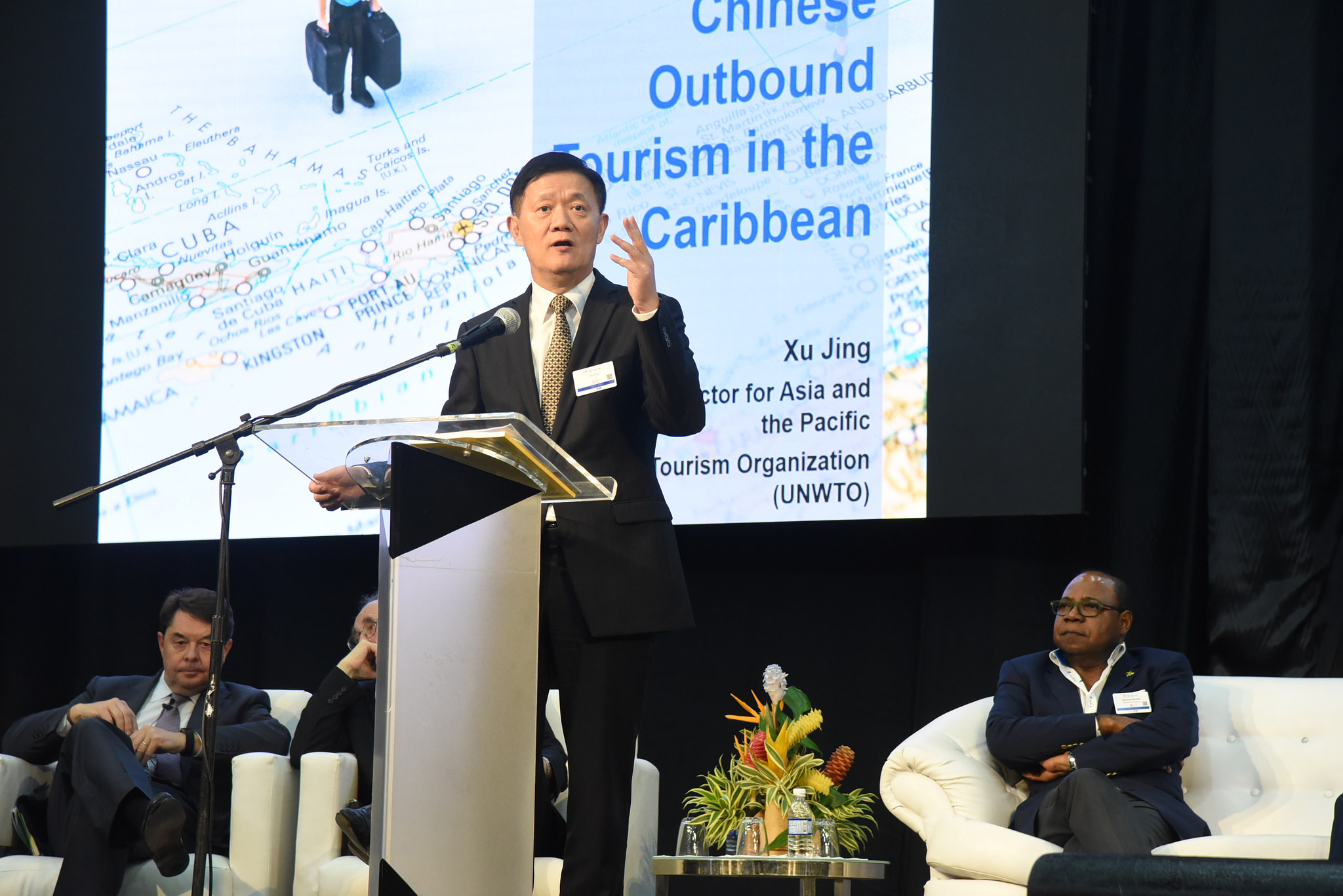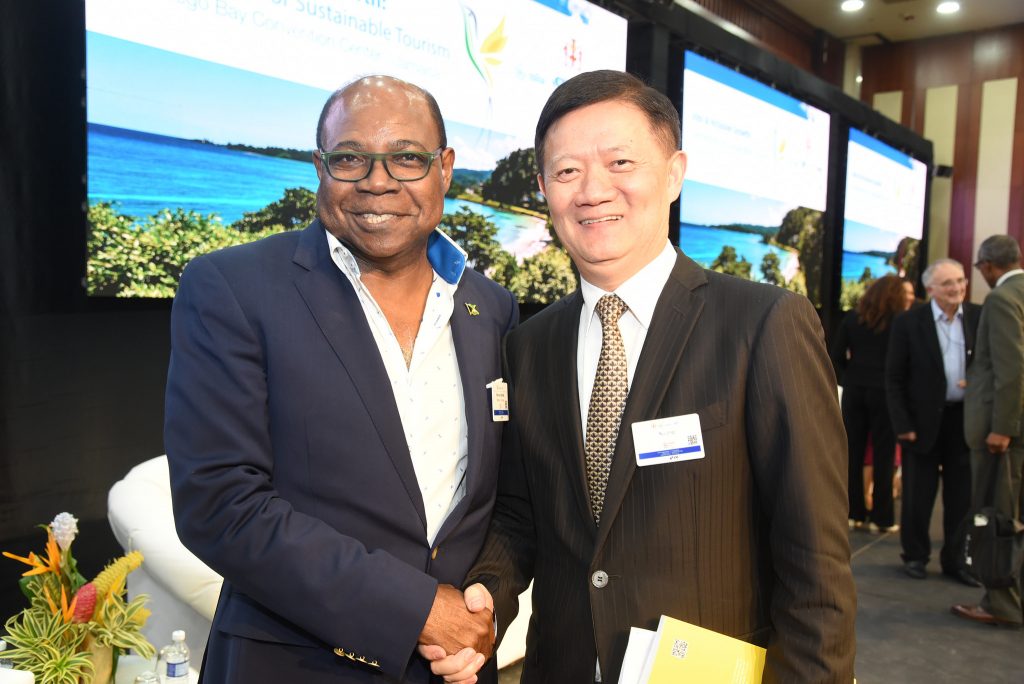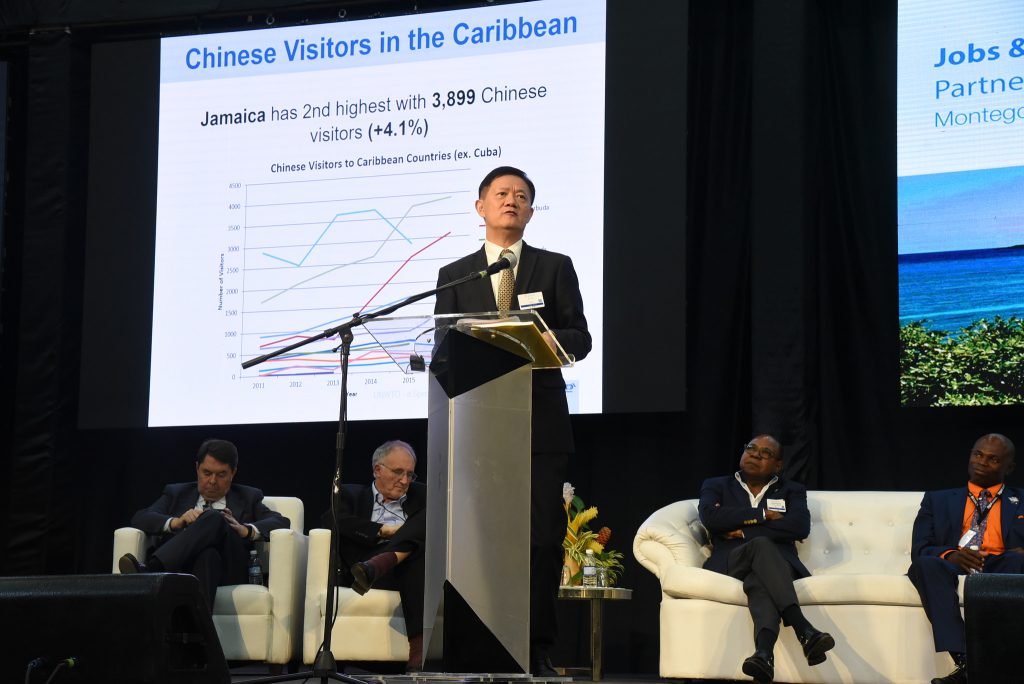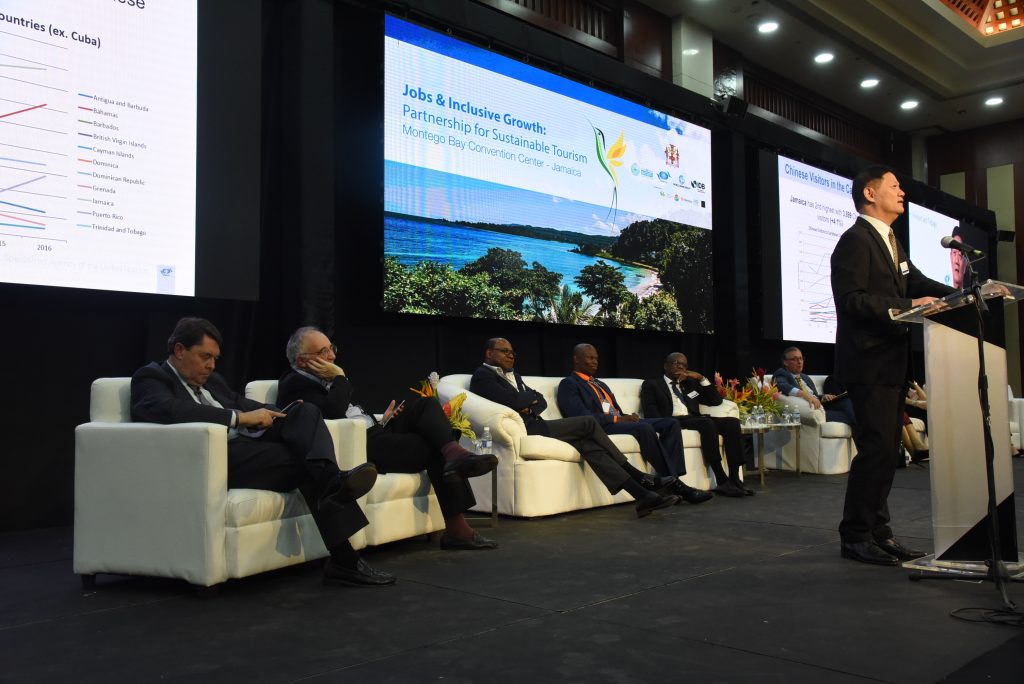
Look to Asia as next frontier for travelers
As the Caribbean looks to grow its tourism market, a senior executive of the United Nations World Tourism Organization (UNWTO) has urged the region to look to Asia as its next frontier.
UNWTO’s Regional Director for Asia and the Pacific, Xi Jing, himself an Asian, yesterday outlined the tremendous potential of the market, especially targeting millennials with strong spending power. He was making a special presentation to participants attending the Global Conference on Jobs and Inclusive Growth: Partnerships for Sustainable Tourism, at the Montego Bay Convention Centre.
He advised the tourism leaders, policymakers and other stakeholders to “start thinking about Asia in addition to your decades of thinking about Europe, your long time of thinking about America and about Latin America.” Mr Xi Jing presented facts on outbound Chinese travel to reinforce his argument that Asia presented itself as the next source market for the Caribbean.
Overall, he said, there were 1,235 million international arrivals around the world and already Asia and the Pacific were taking 25 percent of the market with the goal of reaching 30 percent by the year 2020. On top of that, he noted, in 2016 while other regions were showing a growth rate of 3.9 percent, the Asia and pacific region was way ahead with a 9 percent growth rate.
In monetary terms, looking at the tourist spend, the Asia-Pacific region was spending 40 percent of the world’s tourism expenditure with much of it remaining within the region. But from the Asian countries alone, China spent 21 percent of the entire world’s tourism expenditure. “On a year-to-year basis, we’re talking about 120 to 130 million Chinese outbound travelers to the rest of the world,” he stated.
Mr. Xi Jing pinpointed the eastern coast of China, including Beijing, Shanghai and other major cities as the area of concentration for Chinese outbound travel and where Jamaica and the rest of the Caribbean must target. “This is the area where per capita GDP is around US$10,000 and generated 32 percent of Chinese travelers around the world, he said.
However, he explained that while now only six percent of the Chinese population had a passport, compared to 40 percent of people of the United States, the Chinese did not need a visa to come to Jamaica; however, this was not well known.
Taking a look at Chinese demographics, Mr. Xi Jing said “baby boomers” were estimated to be 219 million by 2030 and preferred long distances and travelled for a longer time, while “millennials” would reach 414 million with 31 percent of the population being technologically savvy and wanted to be treated differently. They were also better at speaking English and it was important to utilize their preferred digital platform in marketing as the typical western system would not work with them.
Most Chinese now travel to neighboring countries but the United States beckoned as their next destination. Mr. Xi Jing said the US received 2.6 million Chinese visitors and 10 million visited the European Continent in 2016. Florida alone received 300,000. Their preferred periods of travel were end of January to beginning of February and the beginning of October.
In the Caribbean, Cuba with 40,000, has the highest number of Chinese visitors with Jamaica coming in second with 3,899. Mr. Xi Jing has suggested that the Caribbean and Jamaica, in particular, could attract many more by changing mind-set on how to penetrate the market and doing away with certain stereotypes about the Chinese.
He also recommended Jamaica increasing facilitation to carry over Chinese travellrs from the American market, offering more Chinese friendly services and highlighting the unique Caribbean culture.



